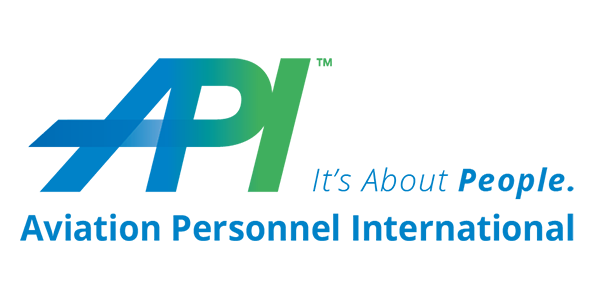
The room was buzzing with energy at NBAA-BACE as we dove into one of the toughest challenges flight departments face—keeping top talent.
The stakes are high and it’s a balancing act. Especially now as Part 91 flight departments are competing with industry peers and the airlines are offering attractive packages. To win the talent game, leaders must balance a three-legged stool that signifies culture, compensation and quality of life.
“If one leg is out of balance, the whole structure collapses,” explained Dr. Chris Broyhill, CEO of AirComp Calculator. “Even the strongest culture won’t retain employees if compensation is lacking.” This balancing act sparked an honest discussion with aviation leaders about how these three pillars work together—and where departments often stumble.
“Even the strongest culture won’t retain employees if compensation is lacking.”
– Dr. Chris Broyhill
What really keeps talented employees engaged? Is it higher pay or a healthier culture? Which matters more in the long run—predictable schedules or long-term incentives? These were just a few of the questions explored during our session, “Enhancing Employee Experience: Culture, Compensation & Beyond.”
As the orchestrator of the panel, I had the privilege of selecting four exceptional thought leaders in business aviation, each chosen for their unique insights and demonstrated success in leadership. My co-moderator, Dr. Chris Broyhill, and I were honored to host Robb Patton, Chief Pilot, Rick Rogers, VP of Aviation, and John Shilstone, VP of Aviation. Their combined expertise created an engaging and impactful discussion on the future of our industry.
Together, we shared stories of success and missteps, giving the audience practical tools they could use right away.
The Data Behind Retention: Culture Comes First
One of the most powerful moments in our session came when we asked: “Have you ever left a job because of toxic culture, even if the pay was good?” Nearly every hand in the room shot up. This response reflected a critical truth—toxic culture drives employees away faster than compensation ever could.
I shared a statistic that hit home: 56% of employees say culture matters more than compensation when considering a job change. But that doesn’t mean flight departments can underpay. “It’s like window shopping,” I explained to the crowd. “You need competitive compensation to attract talent, but it’s the culture that keeps them there.”
This sparked a lively discussion among the panelists. Robb Patton chimed in with a story about building camaraderie through humor. “We created a shadow box with LEGO® Minifigures for each team member, complete with personal quirks,” he said, smiling. “It’s silly, but it reminds us that we’re in this together.” Even the principal of their company loved it so much that he now shows it to his guests when they walk through the hangar.

Patton’s story isn’t just about fun; it’s a lesson in psychological safety. When employees feel comfortable being themselves, they trust their leaders—and that trust leads to accountability. “Psychological safety isn’t about everyone feeling good all the time,” Patton explained. “It’s about creating space where people feel safe to raise concerns without fear.”
“Psychological safety isn’t about everyone feeling good all the time. It’s about creating space where people feel safe to raise concerns without fear.”
– Robb Patton
Transparency and Trust: The Keys to Compensation Conversations
Compensation is still essential, but it can’t stand alone. Rick Rogers stressed the importance of advocating for the entire department—not just pilots—when asking for raises. “Leaving people out sends the message that they don’t matter,” Rogers warned. “It erodes trust, and once trust is lost, it’s hard to get back.”
Rogers shared a story about a time his team felt underpaid. “We gathered industry data to show HR where we stood,” he said. “At the end of the day, we secured a 20% pay increase for the entire team because we approached it as a unified group.”
But transparency goes beyond sharing wins. “Even if the answer isn’t what they want to hear, employees need to know you’re advocating for them,” Rogers added. “If you don’t communicate the ‘why,’ they’ll fill in the blanks themselves—and usually with the worst-case scenario.”
“Leaving people out sends the message that they don’t matter. It erodes trust, and once trust is lost, it’s hard to get back.”
– Rick Rogers
Creating Transformational Change: A Case Study
John Shilstone shared his experience leading transformational change within his aviation department. “When I arrived, employee engagement scores were the lowest in the organization of 48,000 employees,” he recalled. Through a deliberate process—defining goals, building accountability frameworks and tracking progress—Shilstone’s team rose to the top 10 in engagement within three years.
“Transforming culture takes time,” Shilstone emphasized. “We implemented employee engagement surveys and shared the results openly with the team. Transparency was key in building trust.” His efforts also led to a significant increase in pay across the board, further reinforcing the importance of balancing compensation with culture.
“Transforming culture takes time. Transparency was key in building trust.”
– John Shilstone
Building a Thriving Flight Department: Practical Takeaways
Our session on employee retention wasn’t just about paychecks or perks. It was about creating lasting change—the kind that builds loyalty, strengthens teams and ensures that departments thrive. Here are some strategies we shared:
- Assess your culture regularly. Use anonymous employee surveys to get honest feedback and uncover hidden challenges.
- Incorporate humor and levity. Small gestures, like a LEGO® mini figurines display at Patton’s firm, Stratus Management, build camaraderie and foster psychological safety.
- Align with corporate values. Understand how your flight department fits into the larger enterprise and mirror that culture to build credibility.
- Engage with HR and compensation experts. Bring in data to back your case for raises or new hires.
- Communicate transparently. Keep your team informed about compensation discussions, even when the outcome isn’t favorable.
The Bigger Picture: Compensation and Culture as Partners
As our discussion came to a close, one thing became clear—culture and compensation aren’t in competition. They work together. A competitive salary might attract talent, but it’s the culture that keeps people engaged. As John Shilstone put it, “Compensation is transactional, but culture is transformational.”
“Compensation is transactional, but culture is transformational.”
– John Shilstone
At Aviation Personnel International, we believe that building great workplaces is about more than mere numbers. It’s about creating environments where people feel valued, trusted and empowered to do their best work.
If your flight department is ready to enhance its culture and compensation strategy, let’s start the conversation. Together, we can build workplaces where both people and performance thrive. Give us a call at +1.415.751.3250 or contact us for a complimentary consultation.


